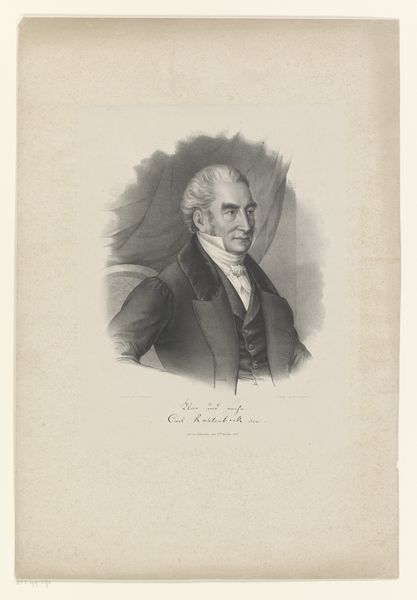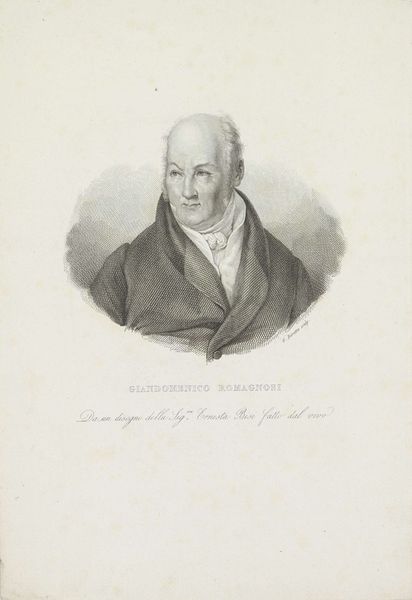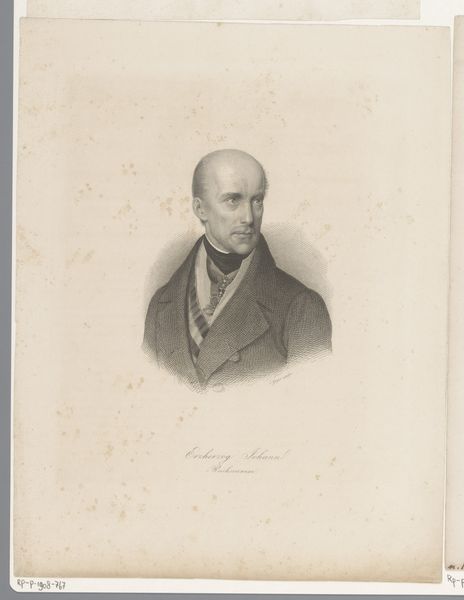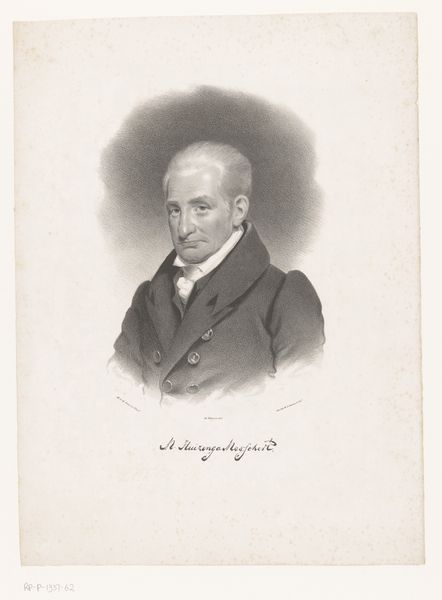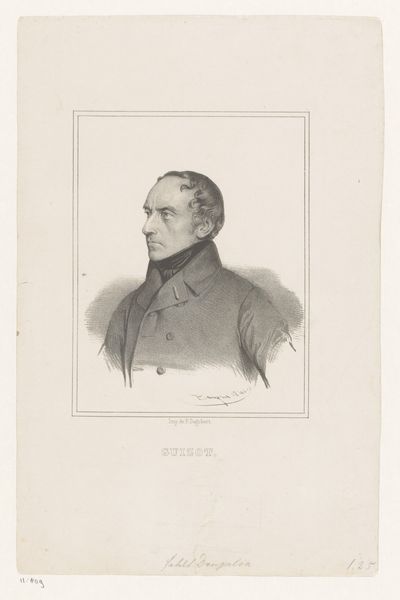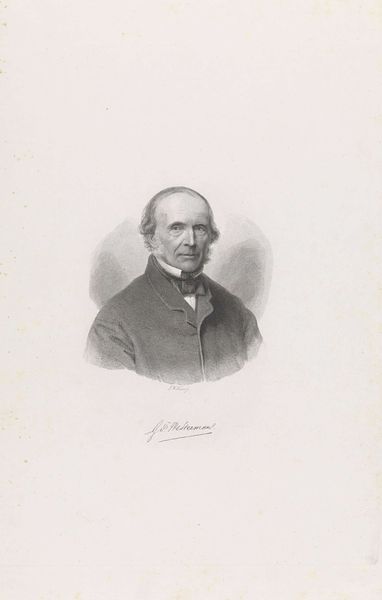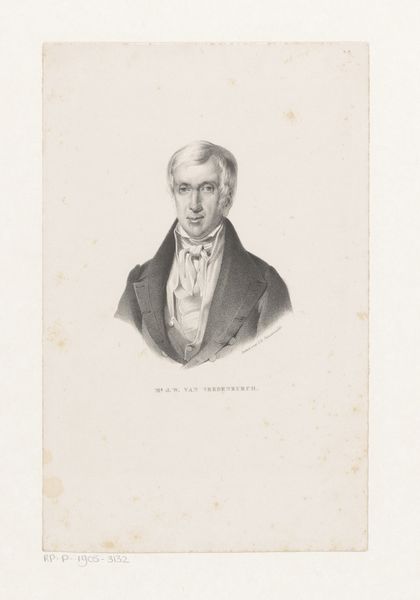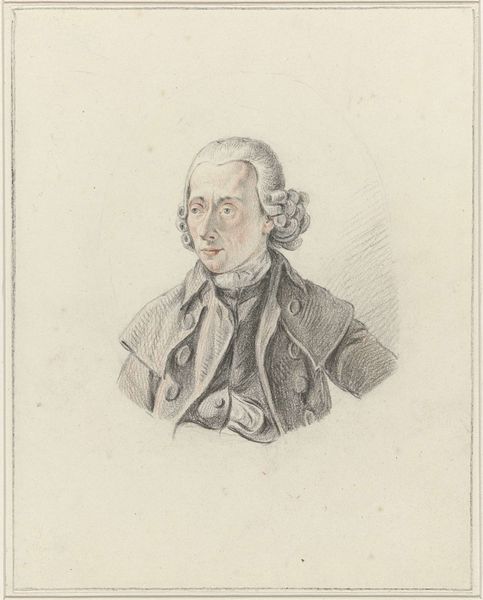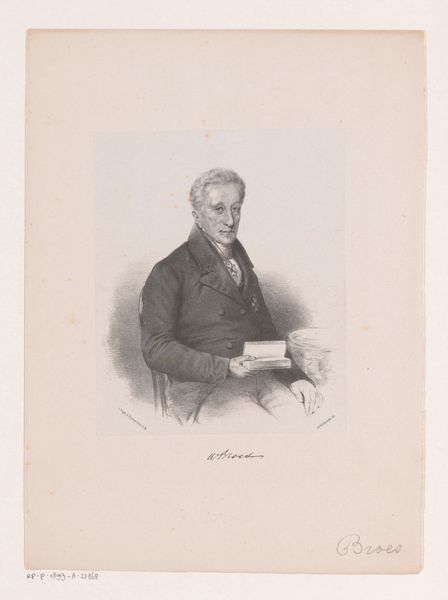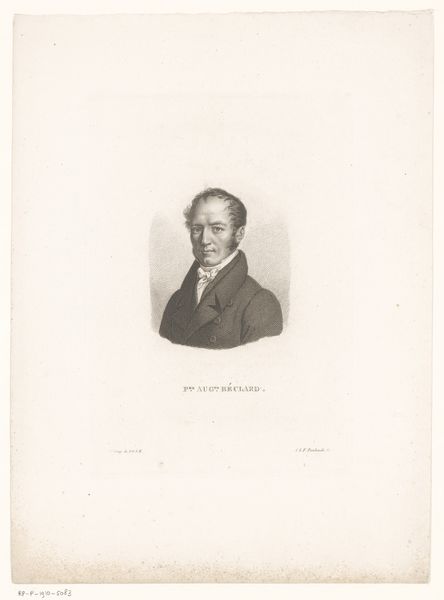
print, engraving
#
portrait
#
pencil drawn
#
neoclassicism
# print
#
charcoal drawing
#
pencil drawing
#
portrait drawing
#
engraving
#
realism
Dimensions: height 270 mm, width 179 mm
Copyright: Rijks Museum: Open Domain
Editor: Here we have "Portret van bioloog Lazzaro Spallanzani," an engraving from sometime between 1810 and 1900. It's a profile portrait, quite formal and stoic. What stands out to you as you consider this image? Curator: I see more than just a portrait, I see a representation of power, knowledge, and the social structures that elevated men like Spallanzani. Consider the historical context: the scientific revolution was deeply intertwined with patriarchal structures, and figures like Spallanzani, while contributing to knowledge, often did so within systems that marginalized others. What does it mean to immortalize this figure, without acknowledging the power dynamics inherent in his position? Editor: That's a really interesting perspective. I was focused on the technique of the engraving, but you're making me think about the politics of portraiture itself. Curator: Exactly! Whose stories get told, whose faces are preserved, and who controls the narrative? Even the Neoclassical style here, with its emphasis on reason and order, reinforces a certain ideology. Where are the women scientists of this era, the marginalized voices? This image prompts us to ask, who is missing from this picture, literally and figuratively? Editor: So you see this portrait as less of an objective depiction of a scientist and more of an artifact reflecting its time and its values? Curator: Precisely. Art isn’t created in a vacuum. By understanding the societal forces at play, we can better interpret the choices made by the artist and the implications of the artwork itself. And what about his work, what consequences and politics did that generate? Editor: This has given me a completely new way of viewing historical portraiture. It's not just about capturing a likeness, but about understanding the power structures it represents. Curator: Absolutely! Question everything, and consider the stories that aren’t being told. We’ve unearthed a hidden dimension!
Comments
No comments
Be the first to comment and join the conversation on the ultimate creative platform.

